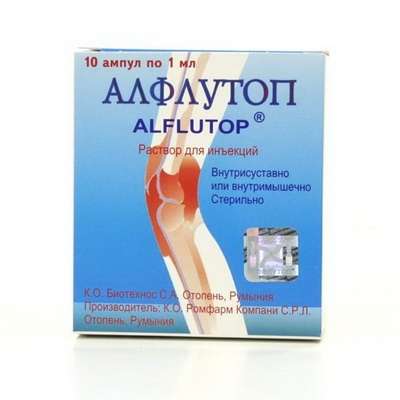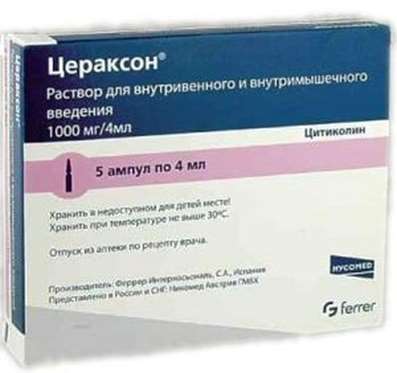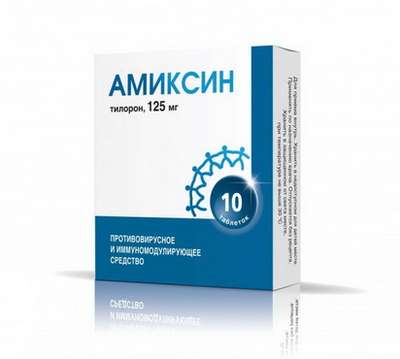Instruction for use: Cetrorelix (Cetrorelixum)
I want this, give me price
Chemical name
N-Acetyl-3- (2-naphthalenyl) -D-alanyl-4-chloro-D-phenylalanyl-3- (3-pyridinyl) -D-alanyl-L-seryl-L-tyrosyl-N (5 ' (Aminocarbonyl) -D-ornithyl-L-leucyl-L-arginyl-L-prolyl-D-alaninamide
Pharmacological group
Hormones of the hypothalamus, pituitary gland, gonadotropins and their antagonists
Nosological classification (ICD-10)
Z31.1 Artificial insemination
Fence of egg, ICSI (Intra Cytoplasmic Sperm Injection), Controlled ovarian stimulation, Controlled superovulation, Controlled superovulation in artificial insemination, Treatment of insemination, Fertilization artificial, Premature ovulation, The IVF program, The program of in vitro fertilization, Superovulation
CAS Code
120287-85-6
Characteristics
Cetrorelix acetate is a synthetic decapeptide with gonadotropin-releasing hormone antagonistic activity (GnRH), an analog of natural GnRH with amino acid substitutions at the 1, 2, 3, 6 and 10 positions. Soluble in water. Molecular weight 1431.06.
Pharmacology
The pharmacological action is antigonadotropic.
GnRH stimulates the synthesis and secretion of luteinizing and follicle-stimulating hormones by gonadotrophic adenohypophysis cells. Due to positive estradiol (E2) feedback in the middle of the cycle, the release of GnRH increases, leading to an increase in the level of LH, which initiates a number of processes, including ovulation in the dominant follicle, resumption of meiosis in oocytes, subsequent increase in progesterone and luteinization.
Cetrorelix acetate competes with natural GnRH for binding to the membrane receptors of pituitary cells, thereby controlling the release of LH and FSH in a dose-dependent manner. With the introduction of a dose of 3 mg, the suppression of LH secretion begins approximately after 1 hour, with 0.25 mg administered after 2 hours, suppression of LH is maintained by constant therapy. The duration of action of cetrorelix depends on the dose administered: after a single administration of 3 mg, the effect lasts for at least 4 days, for the supporting effect, 0.25 mg every 24 hours is necessary. Cetrorelix acetate has a more pronounced suppressive effect on LH than on FSH. Initial release of endogenous gonadotropins does not occur, which agrees with the antagonistic effect.
The effect of cetrorelix acetate on the secretion of LH and FSH is reversible after discontinuation of treatment. The level of FSH does not change when using cetrorelix in the dose range used for controlled ovarian stimulation.
During hormonal treatment to stimulate the ovaries premature ovulation can lead to the appearance of eggs that are not suitable for fertilization. Cetrorelix dose-dependent delay in raising the level of LH and, therefore, undesirable premature ovulation.
Pharmacokinetics
Rapidly absorbed after SC administration, Cmax in plasma is achieved approximately 1-2 hours after administration. Absolute bioavailability with n / to the introduction of healthy women - 85%, binding to plasma proteins (in vitro) - 86%.
Pharmacokinetic parameters in healthy women after SC administration 3 mg once, 0.25 mg once and 0.25 mg multiple (within 14 days), respectively: Cmax - 28.5 (22.5-36.2); 4.97 (4.17-5.92) and 6.42 (5.18-7.96) ng / ml; Tmax - 1.5 (0.5-2) h; 1.0 (0.5-1.5) h and 1.0 (0.5-2) h; T1 / 2 - 62.8 (38.2-108) h; 5.0 (2.4-48.8) h and 20.6 (4.1-179.3) h; AUC-536 (451 -636) ng ∑ h / ml; 31.4 (23.4-42.0) ng ∑ h / ml and 44.5 (36.7-54.2) ng ∑ h / ml. With a single injection of 3 mg, the volume of distribution is 1.16 l / kg, the total plasma clearance is 1.28 ml / min ∑ kg. On the day of oocyte collection in patients receiving therapy for controlled ovarian stimulation, the concentration of cetrorelix was approximately the same in the follicular fluid and plasma. With subsequent administration of 0.25 and 3 mg, the plasma concentration of cetrorelix was lower or lower at the day of oocyte collection and embryo transfer.
It is cleaved by peptidases, the main metabolite is the (1-4) peptide. After sc administration of 10 mg for men and women, cetrorelix and a small amount of peptides (1 -9), (1-7), (1-6) and (1-4) are found in bile after 24 hours. In vitro studies, cetrorelix Was stable in the I and II phases of metabolism.
After sc administration of 10 mg of cetrorelix to men and women, only unchanged cetrorelix is found in the urine. After 24 hours, cetrorelix and a small amount of peptides (1-9), (1-7), (1-6) and (1-4) are found in the bile. 2-4% of the dose is excreted unchanged in urine, 5-10% are excreted with bile in the form of cetrorelix and four of its metabolites. Only 7-14% of the total dose is detected as unchanged cetrorelix and its metabolites in urine and bile within 24 hours. The rest of the dose could not be isolated, because Urine and bile were not collected for more than 24 hours.
Pharmacokinetic studies in patients with impaired liver and kidney function, in children and elderly patients were not conducted. Pharmacokinetic differences in different races were not determined. Pharmacokinetic differences between healthy patients and patients receiving therapy aimed at controlled ovarian stimulation were not detected.
Clinical researches
In 5 clinical studies of cetrorelix acetate (2 studies in Phase 2 clinical trials and three in Phase 3 clinical trials), 732 patients aged 19 to 40 years old (mean age 32 years) participated. 95.5% of the subjects were Caucasian; 4,5% - African Americans, Arabs, Asians, etc. Patients with polycystic ovary syndrome, depleted ovarian function or non-functioning ovaries, patients with stage III-IV endometriosis were excluded from the studies.
In these studies, two dosing regimens were studied: single dose and multiple dosing regimens. In Phase 2 clinical trials, a single dose of 3 mg was established as minimally effective to inhibit premature increase in LH for at least 4 days. In the repeated use mode, a dose of 0.25 mg was considered to be the least effective. The degree and duration of LH suppression were dose-dependent.
Two trials of Phase 3 clinical trials compared the efficacy of a single dose of 3 mg and repeated administration of 0.25 mg; in the third study, cetrorelix was studied only in the multiple-dose regimen of 0.25 mg. From the 2nd-3rd day of the normal menstrual cycle, recombinant FSH or human menopausal gonadotropin was administered to stimulate the ovaries. The dose of gonadotropins was selected individually. In a study of a single dose regimen of cetrorelix, acetate 3 mg was given on the day of controlled ovarian stimulation when an adequate level of estradiol (400 pg / ml) was reached, usually on day 7 (within 5-12 days). If human chorionic gonadotropin was not administered within 4 days after a single application of 3 mg of cetrorelix acetate, 96 hours later the drug was administered at a dose of 0.25 mg daily until the day of administration of the human chorionic gonadotropin inclusive.
Results of the study
In addition to cases of in vitro fertilization (IVF) and intracellular sperm injection, one pregnancy was observed after intrauterine in vitro fertilization.
In five Phase 2 and Phase 3 clinical trials, 184 women from 732 had a pregnancy, including 21 pregnancies after the transfer of frozen-thawed embryos.
In a single dose of 3 mg cetrorelix, 9 patients received an additional dose of 0.25 mg and 2 other patients received 2 additional doses of 0.25 mg. In both studies, the average number of days for the intake of cetrorelix acetate in a multiple dosing regimen averaged 5 days (within 1-15 days). Cases of drug intolerance in the form of allergic reactions were not observed.
Carcinogenicity, mutagenicity, effects on fertility
Long-term studies of the carcinogenicity of cetrorelix acetate on animals have not been conducted. Cetrorelix acetate did not exhibit genotoxicity in vitro (Ames test, HPRT test with hypoxanthine-guanine phosphoribosyl transferase for gene mutations in mammalian cells, chromosomal aberration test) and in vivo (chromosomal aberration test, micronucleus test in mice). Caused polyploidy in cell culture (fibroblasts of the light Chinese hamster), but not in the V-79 test and not in cultured peripheral human lymphocytes and in vitro in the micronucleus test in the cell culture of Chinese hamster lung fibroblasts. Introduction to female cetrorelix acetate acetate at a dose of 0.46 mg / kg for 4 weeks resulted in absolute infertility, which persisted for 8 weeks after discontinuation of the drug.
Laboratory Tests
In 1-2% of patients receiving cetrorelix during treatment aimed at controlled stimulation of the ovaries, a threefold increase in the level of enzymes (ALT, AST, gamma-glutamyltransferase, APF) was noted. The clinical significance of these data was not determined.
During the stimulation of the ovaries by human menopausal gonadotrophin cetrorelix, acetate had no significant effects on the hormone level (except suppression of elevated LH levels).
Application of Cetrorelix substance
Prevent premature ovulation during treatment aimed at controlled ovarian stimulation followed by oocyte collection and assisted reproductive activities.
Contraindications
Hypersensitivity to cetrorelix acetate, exogenous peptide hormones, GnRH, GnRH analogues, pregnancy (presumed or confirmed), lactation period, postmenopausal period, renal and / or hepatic insufficiency.
Restrictions
Not intended for use by women 65 years or older.
pregnancy and lactation
Cetrorelix acetate, administered to rats during the first seven days of pregnancy at doses up to 38 μg / kg (approximately one-time the recommended therapeutic dose for humans, calculated for body surface area) had no effect on the development of an implanted fertilized egg. However, a dose of 139 μg / kg (approximately four times the human dose) resulted in resorption of the fetal egg and postimplantation loss in 100% of cases.
With the introduction of cetrorelix acetate from the 6th day of pregnancy and approximately until the time of delivery to rats at a dose of 4.6 μg / kg (0.2-fold human dose) and rabbits at a dose of 6.8 μg / kg (0.4- Fold human dose), very early resorption of the fetal egg and complete miscarriages (total postimplantation loss) were observed. The resorption of fetuses in animals is a logical consequence of changes in the hormonal level associated with the antigonadotropic properties of cetrorelix acetate, and consequently, loss of fetus is also possible in humans. In animals with a pregnancy, an increase in the number of cases of fetal anomalies was not observed.
Contraindicated with confirmed or suspected pregnancy (before treatment, pregnancy should be excluded).
The action category for fetus by FDA is X.
It is not known whether cetrorelix acetate penetrates into breast milk. Since many drugs are excreted into human milk, and the effects of cetrorelix acetate on lactation and / or infants fed breast milk have not been studied, it should not be prescribed to nursing women.
Side effects
The safety of cetrorelix acetate was evaluated in controlled clinical trials in 949 patients receiving therapy for controlled ovarian stimulation, aged 19-40 years (mean age 32 years), 94% of them Caucasian. Cetrorelix acetate was administered at a dose of 0.1 mg to 5 mg once or more times. Systemic adverse reactions from the onset of treatment with cetrorelix acetate to pregnancy confirmation with ultrasound, observed in ≥1% of patients: moderate to severe severe ovarian hyperstimulation syndrome (sensation of tension and abdominal pain, vomiting, diarrhea, difficulty breathing) 3.5% ( N = 33), nausea - 1.3% (n = 12), headache - 1.1% (n = 10).
Local reactions (usually transient, medium intensity, short-term): redness, erythema, subcutaneous hemorrhage, itching, swelling. During post-marketing research, rare cases of hypersensitivity reactions were noted, including anaphylactoid reactions.
In a study on indications unrelated to infertility (ovarian cancer), a severe anaphylactic reaction followed by coughing, rash, hypotension was observed in one patient after 7 months of treatment with cetrorelix acetate at a dose of 10 mg / day.
In Phase 3 of the clinical study of cetrorelix acetate there were 2 stillbirths.
Congenital anomalies
According to the results of completed clinical trials, 316 newborns from mothers who used cetrorelix acetate had the following anomalies: one of the twins had anencephaly (died 4 days after birth), the second was born normal; One child was born with a defect of the interventricular septum and one child with bilateral congenital glaucoma.
In four cases, the pregnancy ended with a medical abortion in Phase 2 and Phase 3 of a study of treatment aimed at controlled ovarian stimulation (there were major abnormalities: diaphragmatic hernia, trisomy 21 pairs of chromosomes, Klinefelter's syndrome, multiple malformations, trisomy 18 pairs of chromosomes). In three of the four cases, intracellular sperm injection was performed, the fourth method used IVF.
Small congenital anomalies included: additional nipples, bilateral strabismus, hymenal infection, congenital nevus, hemangioma and prolonged QT syndrome. The causal relationship between the described anomalies and the intake of cetrorelix acetate is unknown. Multiple factors, genetic and other (including treatment aimed at stimulating the ovaries, IVF, gonadotropins and progesterone and not only these factors) create difficulties in determining the cause.
Interaction
In studies in vitro a low probability of interaction with drugs metabolized with the participation of cytochrome P450 or undergoing conjugation reactions was noted, but it is impossible to completely exclude the possibility of such interaction.
Overdose
Data on overdose of cetrorelix acetate 0.25 and 3 mg in humans do not. Single doses up to 120 mg were well tolerated by patients treated on indications other than infertility.
Routes of administration
PC.
Precautions
Cetrorelix acetate should be prescribed by a physician with experience in the treatment of reproductive disorders. Before starting therapy, the patient should be warned about the duration of treatment, the need for monitoring procedures and the risk of possible adverse reactions. Careful observation of patients with hypersensitivity to GnRH after the first injection is necessary.
In the case of a syndrome of ovarian hyperstimulation, symptomatic treatment (rest, intravenous electrolytes or colloids, heparin therapy) is performed.
Support for the luteal phase (an activity aimed at supporting the onset of pregnancy) should be conducted in accordance with the generally accepted practice of reproductive activities.
Due to the lack of clinical experience of repeated stimulation of ovulation with the drug during repeated courses of treatment should be used with caution and only after careful assessment of the degree of potential risk and effectiveness of treatment.

 Cart
Cart





